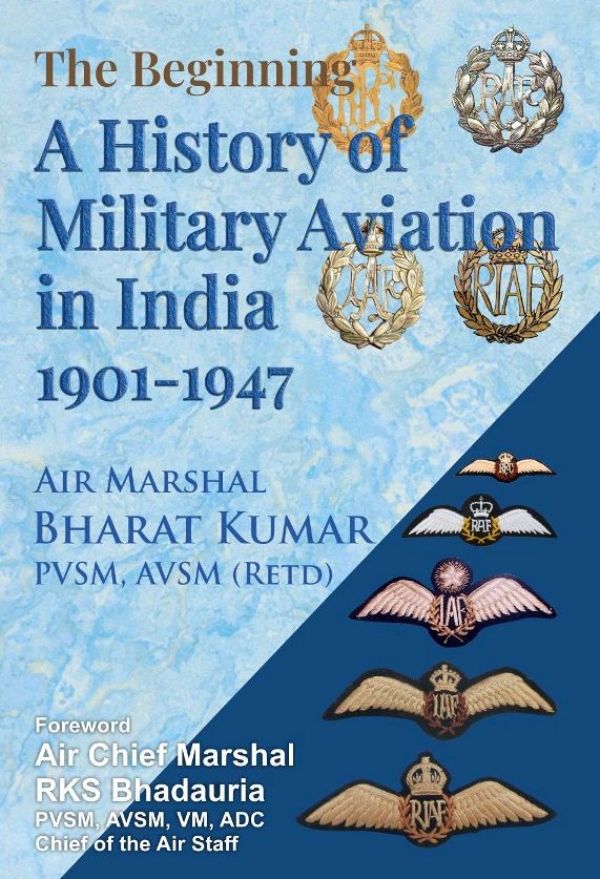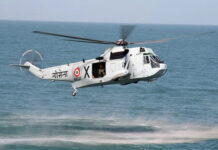by Air Marshal Bharat Kumar, PVSM, AVSM, Retd
The book answers a number of questions: How the idea of the formation of an air force for India was mooted? What problems were encountered in its formation? Why did it take such a long time for the first squadron to come up to its full strength? And finally, the reasons for the delays in the build-up of the IAF and formation of additional squadrons.
The initial part of the book covers the evolution of military aviation in India from 1901 when the first and the only balloon unit was inducted for purposes of reconnaissance work in the North West Frontier. The first lot of manned aircraft arrived in India for demonstration purposes in 1910. A Central Flying School was established in India as far back as 1913 and the ‘Indian Flying Corps’ saw action in Egypt and Mesopotamia (Iraq) in 1915 before its merger into the Royal Flying Corps.
A small number of daring young Indians served in the Royal Flying Corps during the First World War. This, notwithstanding the rules that only persons of European descent could join the armed forces. They left their indelible mark on the Indian military history and the stories of these young pioneers have been covered.
The RAF was in India right through from 1915 till India achieved her independence in 1947 – some units did leave in 1948. The history of the RAF in India during this period has been covered. The RAF’s role in the Third Afghan War, as well as in the Jalianwala Bagh massacre. It was the first-ever and the only time in India when unarmed civilians were bombed and strafed at Amritsar and Gujranwala immediately after the Jalianwala Bagh Massacre.
The British had to deploy at least two divisions on a near-permanent basis in the North West Frontier. The RAF was inducted into India mainly to assist the Indian Army in countering the problems posed by various tribes in the in the North West Frontier region. The British were never able to establish a durable peace against these tribesmen. The RAF was deployed to assist the Indian Army in the North West Frontier and engaged the tribesmen right from 1916 till the opening stages of the Second World War when the responsibility was handed over to the Indian Air Force squadrons. The author has described these operations in some detail.
With the Royal Air Force already in India, there was naturally fierce opposition to the creation of an Indian Air Force. The political pressures in India forced the British, and they had to relent in the end. The ‘skirmishes’ at the highest levels of the British bureaucracy and military hierarchy in the debate on the creation of the Indian Air Force have been described.
The book brings out the discriminations and British prejudices against Indians who joined the Indian Air Force and how they overcame those prejudices with grit and determination with their chins up.
No. 1 Squadron, IAF came into being on 1 April 1933 but it took another nine years before the second and subsequent squadrons were formed. Expansion took place under the compulsions of the Second World War. The short histories of these squadrons, from their raisings till 1947, have been covered.
India was faced with a maritime threat during the initial years of the Second World War. The onus for the defence of the Indian seashores fell on the IAF and the RAF squadrons in India. Five Coast Defence Flights were raised for this purpose.
Air power played a decisive role in the Allied victory over Japan in Burma. in World War 2. The chapter on “Japanese invasion of Burma and the Role Played by the Indian Air Force” recounts the role played by the Indian Air Force’s in the victory against the Japanese.
Indian Air Force Day is celebrated on 8 October. It was this day in 1932 that the formation of the Indian Air Force was notified in the Gazette of India. But, the book reveals that the origins of an air force in India can be traced to even before the First World War. There are other little known facts about the Indian Air Force, as well as the evolution of military aviation in India, that needs to be brought to the attention of the military aviation enthusiasts and especially those associated, in one capacity or the other, with the Indian Air Force.
The book has many new and hitherto not so well-known details about the growth of military aviation in India and that of the Indian Air Force.
• the first tactical reconnaissance in the world (1911).
• the first airlift of civilians from a besieged country (Afghanistan 1928).
• the first-ever battle to be won by air power alone (Pink’s War 1925).
• the first and the only instance of a war/battle being named after an individual (Pink’s War once again).
• the first casualty air evacuation by helicopter (Burma on 21 April 1944).
Finally, the drama of the division of the Royal Indian Air Force and its reconstitution as the air forces of India and Pakistan has been described. The British put forward every argument for allotting seven squadrons to Pakistan and two to India instead of vice versa. But our stalwarts stood their ground and got the share India deserved.
About the Author
Air Marshal Bharat Kumar, PVSM, AVSM, is an alumnus of National Defence Academy, Defence Services Staff College and Vorsholov General Staff Academy, (Moscow). He was commissioned in the fighter stream of the Indian Air Force in December 1959. A veteran of 1965 and 1971 conflicts, he has held many command and staff assignments in his career. He commanded a MiG-21 Squadron, two major operational bases including the prestigious Mirage-2000-equipped Air Force Station, Gwalior, and was Air Office Commanding, HQ Maritime Air Operations. His staff appointments include Operations 1, Air 1, Senior Air Staff Officer at headquarters of operational commands; those at Air Headquarters being Director Operations, Director Plans and Assistant Chief of Air Staff (Inspection). He reached the pinnacle of his career when he took over as the Air Office Commanding-in-Chief Southern Air Command, IAF in 1995. He retired from the Service in 1997.


















